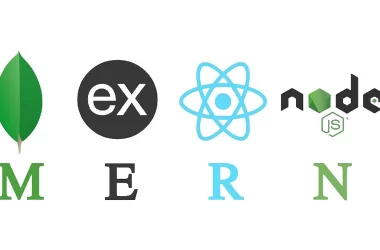How the Monkey King maps to privilege escalation, polymorphic threat logic, and architectural traversal in modern attack lifecycles
The Sun Wukong Glyph: Sovereignty seized, form shifted, containment tested
Original artwork © 2025 Narnaiezzsshaa Truong | Cybersecurity Witwear
Introduction: The Threat That Doesn’t Stay Still—It Shifts, Climbs, and Evades
Traditional security models assume static threats: fixed identities, predictable behaviors, linear escalation. But modern attackers—especially AI-assisted ones—don’t stay still. They shift form, climb privilege hierarchies, and traverse architectures with mythic agility.
Sun Wukong doesn’t escalate. He transforms.
This article presents the Sun Wukong Framework: a myth-tech compression of escalation, evasion, and strategic containment through the legendary Monkey King. Like Ravana, Wukong is sovereign—but his sovereignty is earned through tactical adaptation, not embedded rule.
The Framework: Escalation → Traversal → Evasion → Correlation → Containment
Core Structure
Motif Arc: Escalation → Traversal → Evasion → Correlation → Containment
Threat Class: AI-assisted polymorphic traversal and privilege logic
Timestamp: October 2025
Series: Myth-Tech Threat Vector Collection
Each phase encodes one threat dimension with three components:
- Stage name: The attack phase
- Mythic archetype: Sun Wukong’s tactical logic
- Forensic timestamp: What defenders must correlate across systems
Reading One: As Variants (Different Threat Contexts)
Wukong I: Privilege Escalation
Context: Climbing from user to kernel
Characteristics: Agile, defiant, boundary-breaking
Modern parallel: Escalation via exploits, misconfigurations, token theft
Sun Wukong begins as a stone-born rebel and ascends to challenge Heaven itself. His journey mirrors privilege escalation: from user → admin → root → kernel, each level seized through defiance and tactical override.
Threat mapping:
- Exploiting misconfigured permissions
- Token theft and impersonation
- Kernel-level exploits and driver injection
Caption: He climbs through refusal.
Forensic Marker: [Escalation Vector]
Wukong II: Lateral Movement
Context: Traversing systems and domains
Characteristics: Agile, shape-shifting, unpredictable
Modern parallel: Credential reuse, remote execution, pivoting across assets
Wukong doesn’t stay in one place. He leaps across domains, transforms into objects, and bypasses containment. His traversal logic maps to lateral movement—the attacker’s ability to pivot across systems once inside.
Threat mapping:
- Remote execution across trusted systems
- Credential harvesting and reuse
- Domain hopping via trust relationships
Caption: He moves like myth.
Forensic Marker: [Traversal Logic]
Wukong III: Polymorphic Evasion
Context: Evading detection through transformation
Characteristics: Shape-shifting, mimicry, illusion
Modern parallel: Polymorphic malware, AI-generated payloads, obfuscation
Wukong transforms into animals, objects, and even other deities. His evasion logic mirrors polymorphic malware—code that rewrites itself to bypass detection.
Threat mapping:
- Code mutation and obfuscation
- AI-generated payloads with shifting signatures
- Behavioral mimicry across executions
Caption: He shifts to survive.
Forensic Marker: [Polymorphic Signature]
Wukong IV: Behavioral Correlation
Context: Detecting across personas and transformations
Characteristics: Multi-role, multi-form, audit-resistant
Modern parallel: UEBA, cross-domain correlation, identity stitching
Wukong’s transformations make him difficult to track. Detection requires behavioral correlation—linking disparate actions across forms to a single threat actor.
Threat mapping:
- User and entity behavior analytics (UEBA)
- Identity stitching across domains
- Temporal correlation of low-signal events
Caption: He is many, but one.
Forensic Marker: [Correlated Identity]
Wukong V: Containment vs. Elimination
Context: Strategic response to persistent, adaptive threats
Characteristics: Unkillable, containable only through strategic discipline
Modern parallel: Assume breach, containment architecture, kill chain disruption
Wukong cannot be killed—only contained. His final imprisonment under the Buddha’s mountain reflects the containment vs. elimination debate in cybersecurity. Some threats cannot be eradicated—only strategically neutralized.
Threat mapping:
- Assume breach mentality
- Containment zones and segmentation
- Strategic kill chain disruption
Caption: He cannot be killed. Only contained.
Forensic Marker: [Containment Logic]
Reading Two: As Stages (Attack Lifecycle)
Stage 1: Escalation — Wukong as Sovereignty Seeker
Caption: He climbs through refusal.
Forensic Timestamp: [Escalation Vector]
The Mythology
Sun Wukong is born from stone, defies mortality, and climbs to challenge Heaven itself. His ascent mirrors privilege escalation—each stage gained through tactical defiance.
The Threat Model
Privilege escalation attacks:
- User-level access → Admin privileges
- Admin privileges → Root/SYSTEM
- Root access → Kernel-level control
Common techniques:
- Exploiting misconfigured permissions
- Token theft and impersonation
- Kernel driver injection
What defenders see in logs: Authorized processes suddenly requesting elevated privileges, unusual service account activity, kernel module loading.
Stage 2: Traversal — Wukong as Domain Leaper
Caption: He moves like myth.
Forensic Timestamp: [Traversal Logic]
The Mythology
Wukong leaps across domains, bypasses boundaries, and traverses Heaven’s architecture with mythic agility. His movement is unpredictable, leveraging every path available.
The Threat Model
Lateral movement techniques:
- Remote execution (PsExec, WMI, PowerShell remoting)
- Credential harvesting and pass-the-hash
- Domain trust exploitation
Common attack patterns:
- Moving from compromised workstation to domain controller
- Pivoting through trust relationships
- Using legitimate admin tools for malicious traversal
What defenders see in logs: Remote authentication attempts, unusual inter-system communication, service account usage across multiple hosts.
Stage 3: Evasion — Wukong as Signature Shifter
Caption: He shifts to survive.
Forensic Timestamp: [Polymorphic Signature]
The Mythology
Wukong transforms into 72 different forms—animals, objects, deities. Each transformation is perfect mimicry, making tracking impossible through appearance alone.
The Threat Model
Polymorphic evasion techniques:
- Code mutation and runtime obfuscation
- AI-generated payloads with shifting signatures
- Living-off-the-land binaries (LOLBins)
Common patterns:
- Malware that rewrites itself on each execution
- Fileless attacks using legitimate system tools
- Behavioral mimicry that blends with normal operations
What defenders see in logs: Legitimate-looking processes performing unexpected actions, signature-less threats, behavioral patterns that change across executions.
Stage 4: Correlation — Wukong as Audit Fragment
Caption: He is many, but one.
Forensic Timestamp: [Correlated Identity]
The Mythology
Wukong’s many forms make him appear as separate entities. Only through careful observation can one recognize the unified intelligence behind disparate manifestations.
The Threat Model
Detection requires behavioral correlation:
- User and Entity Behavior Analytics (UEBA)
- Identity stitching across domains and personas
- Temporal correlation of low-signal events
Analysis challenges:
- Same actor appears as different users
- Activity distributed across multiple accounts
- Each individual action appears benign
What defenders must do: Correlate seemingly unrelated events across time, domains, and accounts to reveal unified threat actor.
Stage 5: Containment — Wukong as Strategic Prisoner
Caption: He cannot be killed. Only contained.
Forensic Timestamp: [Containment Logic]
The Mythology
Wukong cannot be destroyed—he survives all attempts at elimination. Only strategic containment under the Buddha’s mountain succeeds. The threat persists, but its impact is neutralized.
The Threat Model
Containment vs. elimination philosophy:
- Assume breach mentality
- Network segmentation and containment zones
- Strategic kill chain disruption
- Accept that some threats cannot be fully eliminated
Strategic response:
- Don’t just try to block—contain and monitor
- Segment critical assets from compromised zones
- Disrupt attack chain at strategic points
- Plan for persistent adversary presence
What this means: Advanced threats (APTs, sophisticated insiders, state-sponsored actors) may not be fully eliminable. Focus on containment, disruption, and strategic neutralization.
The Progression: How Stages Connect
Stage Transitions
Escalation enables Traversal:
Elevated privileges allow movement across systems and domains.
Traversal enables Evasion:
Multiple access points provide opportunities for behavioral shifting.
Evasion requires Correlation:
Only unified detection across transformations reveals the threat.
Correlation informs Containment:
Understanding unified threat actor enables strategic response.
Complete lifecycle:
- Privilege escalation gains access
- Lateral movement spreads presence
- Polymorphic evasion avoids detection
- Behavioral correlation reveals unified actor
- Strategic containment neutralizes persistent threat
Each stage requires different defenses:
- Stage 1: Privilege access management, least privilege enforcement
- Stage 2: Network segmentation, lateral movement detection
- Stage 3: Behavioral analytics, signature-independent detection
- Stage 4: SIEM with advanced correlation, UEBA platforms
- Stage 5: Assume breach architecture, containment strategies
Strategic Implications
Multiple Attack Classes
Wukong compresses:
- Privilege escalation (vertical breach)
- Lateral movement (horizontal traversal)
- Polymorphic evasion (signature shifting)
- Behavioral misrecognition (audit failure)
- Containment logic (strategic neutralization)
This is not one threat type—it’s a complete attack lifecycle framework.
Architectural Integration
Defenses must:
- Model escalation paths (user → kernel)
- Track traversal across domains
- Detect polymorphic shifts
- Correlate behavior across roles
- Strategically contain, not just eliminate
Forensic Markers: What To Look For
[Escalation Vector]
Detection approach: Privilege access monitoring, anomaly detection on service accounts, kernel activity auditing
What to search for:
- Processes requesting unusual privilege levels
- Service account activity outside normal patterns
- Kernel module loading from unexpected sources
- Token manipulation and impersonation
Tools: Windows Event Logs (4672, 4673, 4674), Sysmon, EDR platforms
[Traversal Logic]
Detection approach: Network flow analysis, lateral movement detection, authentication logging
What to search for:
- Remote authentication from unusual sources
- Inter-system communication outside baselines
- Use of admin tools (PsExec, WMI) from non-admin systems
- Pass-the-hash indicators
Tools: Network traffic analysis, Windows Event Logs (4624, 4625, 4648), lateral movement detection tools
[Polymorphic Signature]
Detection approach: Behavioral analytics, signature-independent detection, living-off-the-land detection
What to search for:
- Legitimate tools performing unexpected actions
- Fileless malware indicators
- Code that changes across executions
- Process hollowing and injection
Tools: EDR with behavioral detection, Sysmon, memory forensics
[Correlated Identity]
Detection approach: UEBA, identity stitching, temporal correlation analysis
What to search for:
- Multiple low-signal events from related accounts
- Activity patterns that match across different identities
- Temporal clustering of seemingly unrelated events
Tools: UEBA platforms, SIEM with advanced correlation, graph analytics
[Containment Logic]
Detection approach: Assume breach architecture, network segmentation, strategic monitoring
What to implement:
- Network segmentation to limit traversal
- Containment zones for critical assets
- Strategic monitoring of adversary presence
- Kill chain disruption at multiple points
Philosophy: Accept that sophisticated threats may persist. Focus on limiting impact through strategic containment rather than fantasy of perfect prevention.
Conclusion: The Monkey King Doesn’t Breach—He Transforms
Sun Wukong is not a static threat. He climbs, shifts, evades, and resists elimination. His myth encodes the full lifecycle of modern AI-assisted attacks: escalation, traversal, evasion, correlation, and containment.
Protection starts with recognition.
Can you track Wukong across domains?
Can you correlate his shifting forms?
Can you contain what cannot be killed?
The glyph provides the pattern. Your architecture provides the evidence. The question is: are you looking?
About the Framework
This is part of the Cybersecurity Witwear Myth-Tech collection—a forensic approach to encoding threat lifecycles through mythic archetypes. The Sun Wukong Framework can be read as variants (attack classes) or stages (complete lifecycle)—both readings are valid and pedagogically deployable.
Motif Arc: Escalation → Traversal → Evasion → Correlation → Containment
Threat Class: AI-assisted polymorphic traversal and privilege logic
Forensic Markers: [Escalation Vector], [Traversal Logic], [Polymorphic Signature], [Correlated Identity], [Containment Logic]
Protection starts with recognition. The Monkey King is already inside.
Framework: Myth-Tech Threat Vector Collection
Author: Narnaiezzsshaa Truong
Published: October 27, 2025
For more frameworks and educational resources:
Copyright Notice
Article text © 2025 Narnaiezzsshaa Truong.
Visual frameworks © 2025 Narnaiezzsshaa Truong.
Cover image © 2025 Narnaiezzsshaa Truong.
All rights reserved.
Visual frameworks available for educational use with attribution.
For commercial licensing inquiries, contact www.linkedin.com/in/narnaiezzsshaa-truong




![[sep-2025]-ai-community — activity-highlights-and-achievements](https://prodsens.live/wp-content/uploads/2025/10/40306-sep-2025-ai-community-activity-highlights-and-achievements-110x110.jpg)



